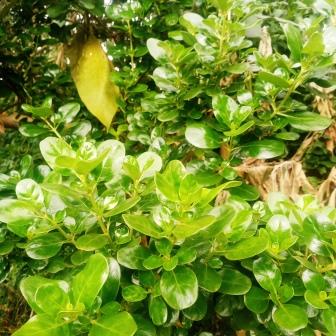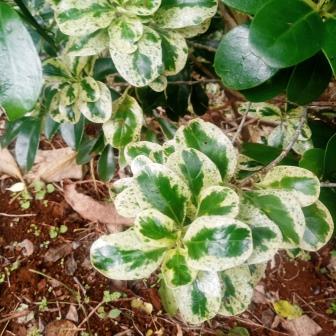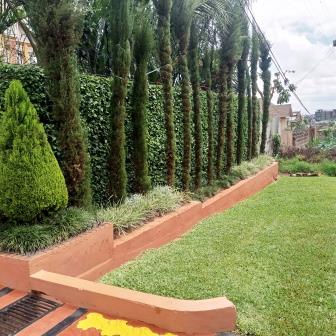If you are looking to add visual delight to your garden, then go for Coprosma. With their glossy and vibrant foliage that shifts colors with changing seasons, Coprosma will add a striking and dynamic element to your garden space creating year-long interest.
What are Coprosmas
Coprosma are evergreen shrubs and small trees that naturally grow along grasslands, rocky areas, swamps and forests in New Zealand, Indonesia, Australia and the Pacific islands. Their habitats range from sea level to mountainous regions.

Botanic Overview
The genus coprosma has about 90 species of these plants with handsome foliage, in the Family Rubiaceae
Description of Coprosma
Coprosma has leaves that are often leathery, can be either rounded, simple or rounded. The foliage can be light to dark green, purple or brown. Coprosma flowers are insignificant. Frankly, I cant remember if ever encountering coprosma in flower. The flowers can be tubular or narrowly funnel-shaped, and are borne individually or in clusters.
When both sexes are grown together, your garden will have spherical, brightly colored, succulent berries usually in autumn.
Popular Coprosma species used in Gardening
Although coprosma exist in may species, only a few species and cultivars are popular in gardening gardening.
These include ;
Coprosma repens
Also known as Looking glass plant, repens is a large deciduous shrub or small tree. The leaves are oblong ,fleshy deep dark green. It bears orange -red berries from June to October . This native of New Zealand can also be prostrate, growing along the ground.

Variants of repens include Coprosma picturata which is a male. It has leaves with dark cream to yellow centres an orange berries. On the other hand “Exotica” is a female version of Picturata. “Marble queen” is male with leaves splashed creamy white.
C. Coppershine –Mass forming female shrub with rigid, spreading branches and inversely lance shaped dark green leaves. It gives transucent blue berries in June.
C. X Kirkii- variants of this hybrid are irregular spreading habits . They have arching branches that bear dark green leaves, which may be oval or lance shaped. In autumn it bears oblong-spherical berries flushed red.
C. Variegata is a spreading female shrub with white -margined -gray green leaves and white berries.
C. Robusta-Vigorous spreading shrubs with semi-glossy dark green leaves . It produces oval-deep orange-yellow berries in autumn.
Wlliamsii variegata– A bisexual shrub with dark and light green marbled leaves,margined green yellow. It gives orange berries.
C. “Blue pearls”. Mass forming female shrub with rigid, spreading branches and inversely lance shaped dark green leaves. It gives translucent blue berries in Jun.
Kiwi gold– a ground hugging male shrub with glossy mid green leaves boldly splashed yellow.
How to grow and care for Coprosma
Soil
Coprosmas prefer neutral to slightly acid soil that is fertile, moist and well drained. Plant them in full sun or partial shade. If you are growing in the green house, use loam based potting compost with additional grit in bright, indirect filtered light and good ventilation.
Propagation
Sow seeds in containers in cold frame. You can root semi-soft wood cutting in a mix of grit and loam.
Maintenance of coprosma
Most Coprosma are easy to care for. During growth water freely and apply a balanced liquid fertilizer. Regular pruning by removal of dead or dried branches is essential. Pinch the tips if want it to bush out. Regularly splash with hose pipe to get the dust off the leaves.
Pests and disease
Coprosma are virtually trouble-free.
How to Use Coprosma in landscaping
Foliage
The leaves of coprosma are its treasure. They make beautiful ornamentals given their bronze, red green, yellow and variegated markings.
Use as topiaries
The growth habit of coprosma renders it suitable for sculptural forms like topiaries and the like.
Year round interest
Because the leaves are its currency, the plants provide consistent texture color in the garden through the year.
Grow as a hedge
Coprosma varieties are well suited to be grown as low growing hedges that is neat and colorful.
Edging plants
Along the borders, coprosma are well suited for edging plants as they grow slowly naturally
Ground covers
Prostrate varies like kiwi gold and repens have low growing and spreading habits that makes them ideal as ground covers.
Grow as container plants
Grow coprosma in pots and containers and show case them on balconies, and in small garden spaces.
Wildlife gardens
Hedges grown with coprosma are ideal for wildlife as the hedges can be nesting places for birds while the berries are sours of food.
Whichever kind of coprosma you go for, you are bound to have arresting color in the garden that will, and an easy trouble free specimen that demands very little attention from you.


Leave a Reply